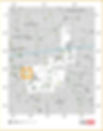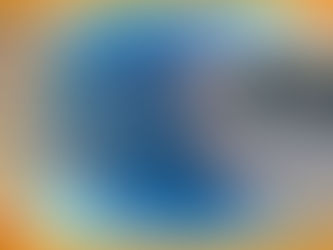M7 - Ptolemy's Cluster in Scorpius | Astrophotography
- Antoine & Dalia Grelin
- Aug 6
- 5 min read
Messier 7 is a bright open cluster in the constellation Scorpius. It’s a great target to photograph, as it is found in a dense and dusty part of the Milky Way, which shows as a ton of background gas in pictures! In this post, you will find information, images, and tips to help you photograph this impressive star cluster.
Object Designation: M7, NGC 6475
Also known as: Ptolemy's Cluster
Constellation: Scorpius
Object Type: Open Cluster
Distance: 980 light-years away
Magnitude: 3.3
Discovery: Ptolemy, 130 AD
Messier 7 is a very good target for beginner astrophotographers, thanks to its brightness and size. Although it is easy to capture with almost any setup, revealing the faint background gas and surrounding dust clouds can be a bit challenging, especially during processing.
In the northern hemisphere, Messier 7 rises high in the sky during July and so it is best photographed in the Summer season.
Messier 7 Astrophotography in the Milky Way band
July 2025
I spent 10 hours shooting M7 using my fast RASA 8 telescope from the Bortle 1 skies of Astronomy Acres in New Mexico. Being within (or super close) to the Milky Way band, I knew that the background behind and around the cluster would be very dusty and, maybe, colorful.
As you can see below, it is completely the case! You can see gray dust, orange and yellow gasses from the Milky Way band, and black dust lanes all over the field of view.
Click the image for the full-resolution version!
GEAR USED:
Camera: ZWO ASI2600MC
Telescope: Celestron RASA 8
Mount: 10Micron GM2000 HPS
Guiding: ZWO ASI 220MM Mini
Accessories: Celestron Focuser / PrimaLuceLab Eagle 5S
Processing: Pixinsight, with R-C Astro plugins. Final touches in Skylum Luminar Neo
ACQUISITION DETAILS:
Total Exposure Time: 10 hours
Exposure Time per frame: 600 seconds
Filters: N/A
Gain: 100
How to Find the Messier 7 Cluster

Messier 7 is located in the constellation Scorpius. It is a beautiful open cluster to both observe and photograph as it sits on a dusty field by the Milky Way band. Finding M7 is easy as it is bright and near other popular objects.
To locate Messier 7, identify Scorpius in the south part of the sky. Look for the bright red star Antares, which marks the heart of the scorpion and is also part of Rho Ophiuchi. From there, follow the tail of the scorpion downward toward the horizon. Messier 7 lies just below the star Shaula (Lambda Scorpii), near what would be the stinger of the scorpion.
Messier 7 spans about 80 arc minutes, which makes it one of the largest open clusters in the sky. It’s easily visible to the naked eye under dark skies and shows up as a bright hazy patch in binoculars. Using a small telescope will show dozens of bright stars scattered across the cluster.
Near Messier 7 you can find some other nice deep sky objects, like Messier 6 (the Butterfly Cluster), M8 (the Lagoon Nebula) and M20 (the Trifid Nebula).
The best time to observe and photograph M7 is in Summer.
M7 Cluster Information
Messier 7 is one of several open clusters in the constellation Scorpius and is estimated to be around 200 million years old. In comparison, the Sun is about 4.6 billion years old, which makes M7 a young cluster in astronomical terms.
M7 is home to around 80 to 100 stars, many of which are bright and massive, making it look impressive visually and in pictures.
Messier 7 by the Hubble Space Telescope and ESO
M7 was captured by professional astronomers several times, from both ground based and space telescopes.

On the bottom left of the attached image you can see the cluster captured by ESO's Wide Field Imager located in Chile. The larger image square is a tiny section of M7 captured by the Hubble Space Telescope. It is incredible to see how many stars, including large bright ones, can be seen in a minuscule square like the one picked for this image.
Our Premium Astrophotography Course
Want to learn all aspects of astrophotography in the most efficient way possible?
The Galactic Course includes access to all our astrophotography courses, processing guides, and downloadables. Step into an ever-growing realm of knowledge and learn at your own pace. Make life-long friends and connections with other members, and get tips from instructors that truly care about your journey and progress under the night sky.
The Gasses Behind M7
Messier 7 is located pretty much on the Milky Way band when seen from Earth, which is why it for sure has a ton of gas visible all around!
I love shooting clusters like this one because there is always something interesting to show, including some challenging fainter gas or dust.

The screenshot above shows where M7 lies in relation to the bright Summer Milky Way band. You can see that it is right where some of the most colorful gasses are!
Processing M7
Messier 7 is simple and awesome to process thanks to the bright stars that aren't too close to each other, and of course the colorful background full of details. There are also dark dust lanes which are nice to show and look great above the nebulous gasses behind. This is an easy one to process even for beginners, as it is difficult not to get something impressive in the end no matter what!

Here you can see what a 600-second single shot looks like. As you can see, the cluster is visible near the left side, and the dark dust lanes within the Milky Way band also show up easily pretty much all over.
If you'd like to learn how to process your images, get our astrophotography processing guides! They include written and video lessons, raw data, and straight to the point tips to help you get the best out of your images.
Messier 7 FAQ
In which constellation is M7 located?
You can find Messier 7 in the constellation Scorpius.
How big is M7?
M23 has a diameter of approximately 25 light-years. From Earth, it has an apparent size of 80 arc minutes.
How old is M7?
Messier 7 is 200 million years old.
How far is Messier 7?
M7 lies approximately 978.5 light-years away from Earth.
How long should my exposure times be when photographing M7?
I recommend between 300 seconds (5 minutes) and 600 seconds (10 minutes) which will give you great results especially if you're looking to get some nice signal for the background gasses. If you just care about the cluster itself, you can be fine doing 30-second exposures and shooting for 1 or 2 hours.
Should I use a filter to image M7?
A broadband filter might help enhance the contrast and reduce light pollution if you are imaging from the city, but we wouldn't recommend using one. If you are imaging from a dark site, you will not need a filter since M7 is an open cluster and is just stars! If your main goal is to capture the faint gasses in the background, you could always try using an HA filter to see if any of this dust includes hydrogen alpha. With our RASA and no filter, we did not see any areas rich in HA in that field of view.
Final Thoughts
Messier 7 is one of my favourite clusters to image during the hot Summer nights. It is easy to capture, easy to process, and with some good processing techniques you can get amazing colourful background gases visible in your final image. It is overall a great cluster for both beginners and experienced astrophotographers.
Have you imaged the M7 cluster? If so, upload your picture in the comments! We'd all love to see your work :)
Clear Skies,
Galactic Hunter
GALACTIC HUNTER BOOKS

















